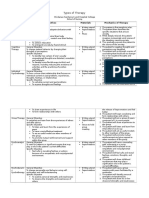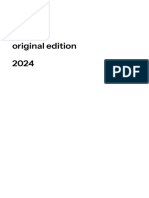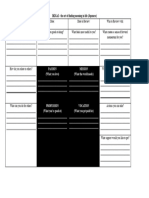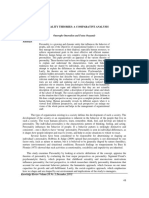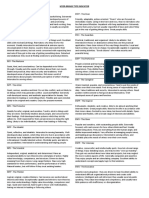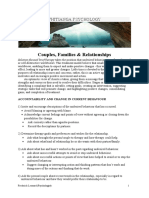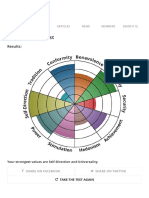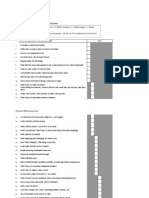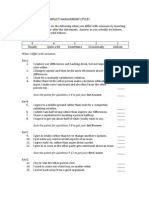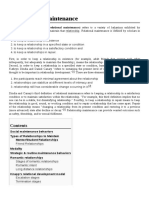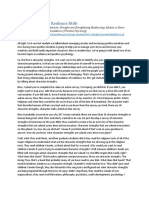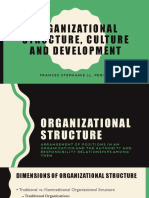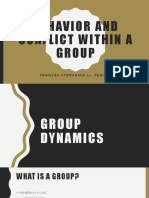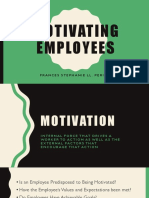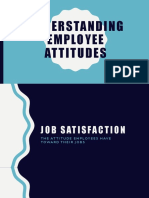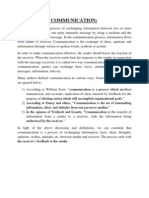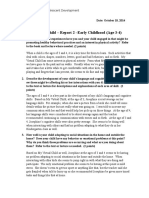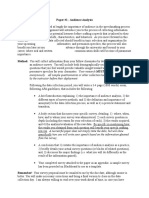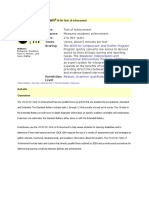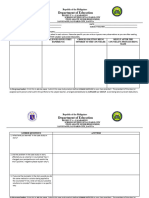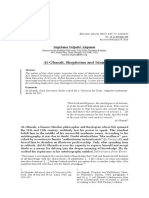Thursday, 20 April 2017
Psych 162: Personality Testing
Personality Testing
- Measures emotional, motivational, interpersonal, attitudinal characteristics of a person
Measuring Interests and Attitudes
- Interest Inventories
• Interest testing: used for educational and career assessment
- Also stimulated by occupational selection and classification
• Issue: Sex fairness
- Tests validated against existing groups, it perpetuates group differences
• Interest
- Attitude or set of attending
- Tendency to give selective attention to something
- Attitude or feeling that an object or event makes a difference or is of concern to
oneself
• Interest is a domain of motivation (Strong, 1927)
• helps with educational and vocational decisions
• Riasec model (Holland)
- Realistic
- Investigative
- Artistic
- Social
- Enterprising
- Conventional
1
� Thursday, 20 April 2017
- Opinion Surveys and Attitude Scales
• For social psychology research
• Consumer research and employee relations
• Attitude: tendency to react favorably or unfavorably to a stimulus (e.g. ethnic group,
custom, institution)
- Cannot be directly observed
- Should be inferred from verbal and nonverbal behavior
• Opinions: replies to specific questions
Development of Personality Tests
- Content-related Procedures
• Obtain information regarding a psychological construct, create items consistent with
that
• Example: Woodworth Personal Data Sheet- information regarding psychiatric and
pre-neurotic symptoms
- Empirical Criterion-Keying
• Development of scoring key in terms of some external criterion
• Select items that differentiate between clinical samples and normal population
• Responses are treated as diagnostic or symptomatic of the criterion behavior with
which they are associated
• Examples: Minestota Multiphasic Personality Inventories (MMPI) [Supporting
possible diagnosis of DSM disorders], California Psychological Inventory,
Personality Inventory for Children
Structured Personality Tests
- Highly structured items
- Clear, unambiguous stimuli
- Close-ended questions
- Response formats
2
� Thursday, 20 April 2017
• True-false
• List of words to check
• Likert scales
• Forced-choice
• Ranking
- Normative vs. Ipsative
• Normative: Comparing self to a norm
• Ipsative: comparing self to self
Personality Questionnaires
- Can be used with individuals or groups
- Easily administered and scored
- Measures different dimensions of personality
• Attitudes
• Adjustments: whether person is able to cope well, use adequate defense
mechanisms to combat anxiety
• Temperament
• Values
• Motivation
• Morality
• Anxiety
Test-Taking Attitudes and Response Bias
- Faking
• Faking good: choosing answers that create a favorable impression
• Faking bad: choosing answers that make them appear more disturbed
• face validity increases susceptibility of faking
- Social desirability: test-taker is unaware of putting up a “good front”
3
� Thursday, 20 April 2017
- Impression management: conscious dissembling to create a specific effect
• To avoid, use: forced-choice items
- Acquiescence: tendency to answer True or Yes
• To avoid: number of items keyed positively should equal number of items keyed
negatively
- Deviation: tendency to give unusual or uncommon responses
Traits, States, Persons and Situations
- Behavior can be explained by both traits, states and their interaction
- Individuals differ in extent of altering behavior to meet the situation
- Different behavior settings influence behavior
- Trait: relatively stable
- State: transitory condition
Test example: NEO PI
- Example: Neuroticism-Extraversion-Openess Personality Inventory-Revised
(NEO-PI R)
• factors are descriptive, not explanatory
• Domains: OCEAN
• Facts: additional traits that identify each domain
Test example: 16 PF (16 Personality Factors)
- Lexical hypothesis: if there exists a word for a trait, then it is a real trait
- Analysis of adjectives through factor analysis
- High correspondence of Global Factors with NEO-PI’s 5-factor theory of personality
- Reliability
• Test-retest
- .69-.80, M=.87
4
� Thursday, 20 April 2017
- .56-.79, M=.70 over 2 month period
• Internal consistency (a range .64 to .85, M= .74)
- Validity
• factor Analysis
• Construct validity (PRF, CPI, NEO PI-R, MBTI, Reasoning)
• Criterion (Self-esteem, adjustment, social skills, empathy, creative potential,
leadership potential
Test example: EPPS (Edwards Personal Preference Schedule)
- Manifest Needs System (Henry Murray)
• Need: internal directional force
- Determines how a person responds to objects or situations
• Needs are motives that underlie behavior
• Results in positive scores
• Normative comparisons questionable
- Reliability
• Split-half= .60-.87
• Test-retest (1 week)= .74-.78
- Validity
• Construct: Taylor Manifest Anxiety Scale, Guilfford-Martin Personnel Inventory
Test Example: Gordon Personality Profile
- Atheoretical
- Aspects of personality significant to daily functioning of a normal person
- Validity
• Factor Analysis
• Criterion: Measures of success, academic achievement
• Construct: Guilford-Zimmerman, EPPS, CO
5
� Thursday, 20 April 2017
- Reliability
• Split-half (.84-.88)
• Test-retest (1 week): .84-.87, 3 months (.80-.87)
PROJECTIVE TESTING
Issues in Projective Testing
- Validity
- Reliability
- Confounds with intelligence
- Bias towards/against certain cultural groups
- Not supported by research
Projective Techniques
- Response to ambiguous scenes, words, or images
- Generate a response following an open-eded instruction
- Intends to uncover such unconsciousness desires that are hidden from conscious
awareness
- The content of the unconscious is symbolic
- Symbols are interpreted in relation to the client
- Process of disambiguation
- Incremental validity in the assessment of personality and psychopathology
- Types
• Association
• Construction
• Completion
• Arrangement or selection
• Expression techniques
6
� Thursday, 20 April 2017
Verbal Techniques
- Sentence completion
• Assesses attitudes towards family, peers, school, work, anxiety, guilt and physical
disability
• Rotter Incomplete Sentences Blank, Sacks’ Sentence completion test, Slater-
Gallagher Sentence completion test
- Story Completion
• e.g. “A boy is at the table with his parents. Father suddenly gets angry. Why?”
Drawing Techniques
- Perceptions and reactions to the world around them
- Style of the drawing
- Content of the drawing
- Which is drawn first and last
- Other specific aspects of the drawing
- Draw-A-Person Test
• Identify emotional indicators in drawings
• Examples: Aggression, timidity, shyness, interpersonal difficulties, etc.
- Kinetic Family Drawing
• “Draw the whole family doing something”
• Omission, size of the figure (dominance), position, distance (who are closer or
farther from each other), interaction with another
- House-Tree-Person
• House: home situation and intrafamily relationships
• Tree: size, shape, quality of trunk, branches, leaves and the ground; unconscious
personal feelings
• Person: individual and his/her own environment
Visual Techniques
7
� Thursday, 20 April 2017
- Thematic Apperception Test
• 31 cards
• Alternative to Rorschach Inkblot Test
• Show a picture tell a story about each slide
• Project unconscious feelings on the story
- Analysis
• Hero
• Conflict
• Perception of the Environment
• Coping
- Rorschach Inkblot Test
• 10 bilaterally symmetrical inkblots
• What the blots look like
• Perceptual-cognitive task
• Examiner needs to be thoroughly trained










